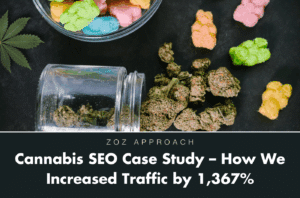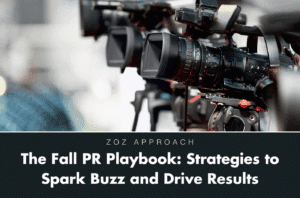One of the topics we have been discussing is how the changing digital landscape will impact paid search. This is why the news that Perplexity, an AI-driven search engine, will start introducing ads within its AI search results is such big news. This innovative move, set to begin later this quarter, marks a significant shift in the way advertisements are integrated into search engines, blending traditional ad revenue models with cutting-edge AI technology.
A New Business Model: Integrating Ads in AI Search
Perplexity’s new business model revolves around a revenue-sharing approach where brands can purchase “related follow-up questions” that appear beneath the primary response to a user’s query. These sponsored questions will be clearly marked as such, ensuring transparency for users. Each brand will pay a fee for every thousand user views of these sponsored questions. Notably, when a publisher’s content is utilized to form an answer to a sponsored question, that publisher receives a share of the ad revenue, which Perplexity describes as a “double-digit” percentage.
Additionally, Perplexity offers publisher partners access to its large language models via an API, enabling them to develop their own answer engines based on their content. This feature could allow publishers to innovate by providing direct answers to users’ queries, potentially increasing user engagement with their content.
Addressing the Content Scraping Controversy
Perplexity has not been without controversy. The company faced backlash for scraping publishers’ content to generate answers, sometimes even after publishers explicitly denied permission. Traditional search engines typically drive traffic to various sites, allowing users to engage directly with the original content. In contrast, AI-driven search tools like Perplexity compile comprehensive answers from a pre-indexed database, which can reduce direct engagement with original sources. This model can potentially deprive publishers of site visits that might lead to subscriptions, ad views, or social media shares.
In response to these concerns, Perplexity has been revising its processes and products. The company has updated how it indexes and cites sources and is actively collecting feedback from publisher partners such as Time, Fortune, Entrepreneur, and Der Spiegel. These efforts aim to refine its platform to better balance the interests of content creators with its own operational needs.
The Implications for Paid Search
Perplexity’s introduction of ads within AI search results has broad implications for the paid search landscape. Here are some key considerations:
New Ad Formats and Inventory: The “related follow-up questions” ad format presents a novel opportunity for brands to engage users in a more interactive and contextual manner. This new inventory could attract advertisers seeking fresh ways to connect with audiences, potentially leading to shifts in ad spend from traditional platforms.
Shift in User Behavior: As users grow accustomed to receiving comprehensive answers directly from AI searches, the likelihood of clicking through to traditional search result pages may decrease. This could result in lower click-through rates (CTRs) for standard paid search ads, prompting advertisers to rethink their strategies.
Changes in Bidding Strategies: With the introduction of AI-generated follow-up questions, advertisers will need to develop new bidding strategies. These strategies may differ significantly from traditional keyword bidding, focusing more on the relevance and engagement potential of follow-up content.
Focus on Content Quality: The value of high-quality, informative content is likely to increase, as publishers who produce such content can benefit from the revenue-sharing model when their material is used in AI-generated answers.
Evolving Metrics and Measurement: The traditional metrics of ad effectiveness, such as CTRs, may become less relevant in this new environment. Instead, metrics may shift towards impressions and engagement with follow-up questions.
Publisher-Advertiser Dynamics: Perplexity’s revenue-sharing model could redefine relationships between search engines, advertisers, and publishers, potentially fostering new types of partnerships and collaborative efforts.
Competitive Pressures and Innovations: If Perplexity’s model proves successful, it could challenge Google’s dominance in the paid search market, prompting innovations in ad offerings from other major players.
Changes in Ad Inventory Dynamics: The nature and availability of ad inventory will likely evolve, influencing pricing and competition within the paid search market.
Adaptation Challenges: Advertisers and agencies will need to adapt their tools and methodologies to manage campaigns effectively across both traditional and AI-driven search platforms.
In summary, Perplexity’s move to integrate ads within its AI search results introduces a host of opportunities and challenges. This development is a significant shift in the digital marketing landscape, with potential ripple effects on user behavior, advertising strategies, and the broader ecosystem of content creation and monetization.
As the industry adapts to these changes, stakeholders will need to innovate and collaborate to navigate this new frontier effectively.

David Wilson
EVP, Digital Marketing & Strategy
David has more than 20 years working in digital marketing, covering in-house for a variety of companies, agencies and running his own digital marketing company. He has worked on Fortune 500 clients in the Pharmaceutical, CPG, Financial Services, and Healthcare verticals.
David brings a passion for proven results to the Zozimus digital marketing team. When asked what he likes about his job, David says that “every day his team has metrics that they are trying to hit for clients. At midnight the scoreboard gets set back to zero and we either hit our goals or we didn’t.”
BOSTON, MARS



